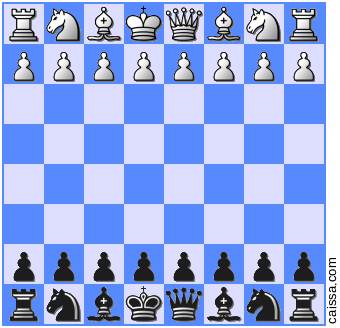As I had previously posted, I've adopted the Robatsch Defense as Black to respond to 1. e4. I've had some luck with it and came across the Pterodactyl Defense as proposed by Eric Schiller and was intrigued as it followed a similar structure. Black's first two moves involve the fianchetto of the king's bishop. The third move involves moving the pawn to c5 - usually in order to get the queen out to a5 where it applies pressure and is not easily dislodged. The c5 move works great for getting some flank control of the center.
Bringing the queen out seems to work fairly well in some cases, but not always (eg. when white doesn't advance the d-pawn). I've discovered, however, that black can get a very solid position by following up with Nc3 - making a very strong bid on the d4 square with three attackers. This feels like a great hyper-modern setup... having a pawn and knight ready to bust open the center for the bishop to control the a1-h8 diagonal!
I'm sure that Mr. Schiller does cover this variation and that this is a version of the Sicilian Defense. I've found that I really enjoy this setup - often with the fianchetto, one can run into a bind, blocking a bishop when doing a 5-6 pawn advance in the center. By displacing that pawn structure just over to the wing, you leave the bishops open allowing for some great development and counter-attacking opportunity.
Here's a game that I just played last evening:
1. e4 g6
2. f4 Bg7
3. Nf3 c5
White has opened up building his pawn center and bringing out his king's knight. The knight gives great center control and kingside defense, and by advancing the f-pawn first he's made a strong grab on the king-side. From what I've seen, a number of people seem to think moving the f-pawn is a weak move as it's a naturally weak pawn and weakens the kingside defense. I disagree, however, in that it allows for an aggressive kingside assault later on. While white developed towards the kingside, I open with the bid for control over the long diagonal.
4. Bc4 Nc6
5. O-O Nf6
White brings out the bishop, attacking my weak f7 square. I notice that his e-pawn is left undefended, so I bring out the knight for the attack.
6. f5 Nxe4
7. fxg6 hxg6
8. d3 Nf6
He surprised me by moving his f-pawn forward to attack my kingside pawns. I hadn't castled yet, so figured I would punch back with my knight and let him open my h-file for the rook.
9. Nc3 d5
10. Bb5 Qd6
He made a developing move with his knight, and I threatened his bishop. My possession of the square was safe, having the knight and queen to back up the move. It kicked his bishop - trying to pin my knight to the king. I brought my queen up to protect the knight and to attack the weak h2 square.
11. Bd2 Ng4
12. Qc1 Bd4+
13. Kh1 Rxh2+
I was then able to leap in to the attack with my knight. This gave me a knight, rook, and queen all attacking the h2 square, along with my light squared bishop aimed in that direction. His best chance was likely to try and block the diagonal by maneuvering his knight on c3 into the way, however he followed up with trying to align his bishop and queen to tear into the kingside. This wasn't an issue to worry about since I had my bishop, knight, and rook guarding the entry in. It was just a matter of me pressing forward with the attack and he resigned, seeing that I would mate in one more move.
So, in all, I was quite pleased with how this defense plays out - the pieces seem to coordinate well together and present a great opportunity to bust things open at the right time.

No comments:
Post a Comment